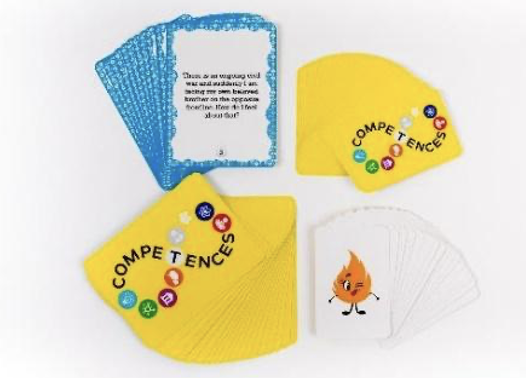| Duration: 60+ min Number of players: 6+ player/s Materials/ Tools needed: Flipchart paper, Different coloured pens Publisher: Recommended by Martin Robinson Language: EN Links: https://www.teachertoolkit.co.uk/2017/04/23/silent-discussion/ |
Short description
“Silent discussion” – is a practical strategy recommended in a chapter by Martin Robinson from the book Progress, a classroom guide detailing some of the ideas from the best of the best educational thinkers. “In this scenario, every member of the class is given equal opportunity to ‘voice’ their opinion in the debate and everyone is exposed to a multitude of diverse opinions.”Silent discussions allow us to access and activate the learner’s prior knowledge, stereotypes and preconceived ideas related to topics. It also helps learners make new connections and learn from the collective wisdom of the group.
Educational value/ Learning Objectives
Writing and silence help students explore a topic or concept in-depth and it engages everyone, particularly those who are less involved in verbal discussions as there is no competition to get their voice heard. It works best when done in pairs or triads.
Recommendations for use
● Engage
First, choose a stimulus to ponder, debate and mull over. This can be a question, quotation, problem, excerpt, idea or image – anything that has an impact and provokes thinking. Whatever you choose, this is centered on a large single sheet of paper (poster paper) leaving plenty of room for students to write.
● Deliver
Explain to everyone that the activity involves responding to the stimulus by writing or drawing their thoughts and questions around it and sharing their thinking. Different coloured pens can be used for each student so you can easily differentiate their thoughts.
● Copy and Paste
After 10 minutes, one student from each group travels silently around the room visiting other groups and is allowed to ‘steal’ ideas to then bring back and add into their own Big Paper.
● Break
Silence is broken after another 5-10 minutes and students can talk about their ideas and discuss verbally.
● Debrief
As a class, delve into the content and discuss ideas, reactions and responses written on the Big Papers.
Tips and Tricks for Facilitators
How to adapt game for different groups, topics, occasions/needs
To end the activity you can display the Big papers on walls or across tables and hold a ‘Gallery Walk’ for students to view in silence.
Feedback questions
- Individual self-reflection
- What can I learn from this activity?
- Pairs conversations
- What was the most challenging? Why?
- Discussions in groups
- What competences can you develop through this game?
- How would they help you in a professional and personal life?
Further discussion topics
Personal & Professional development
Lifelong learning




